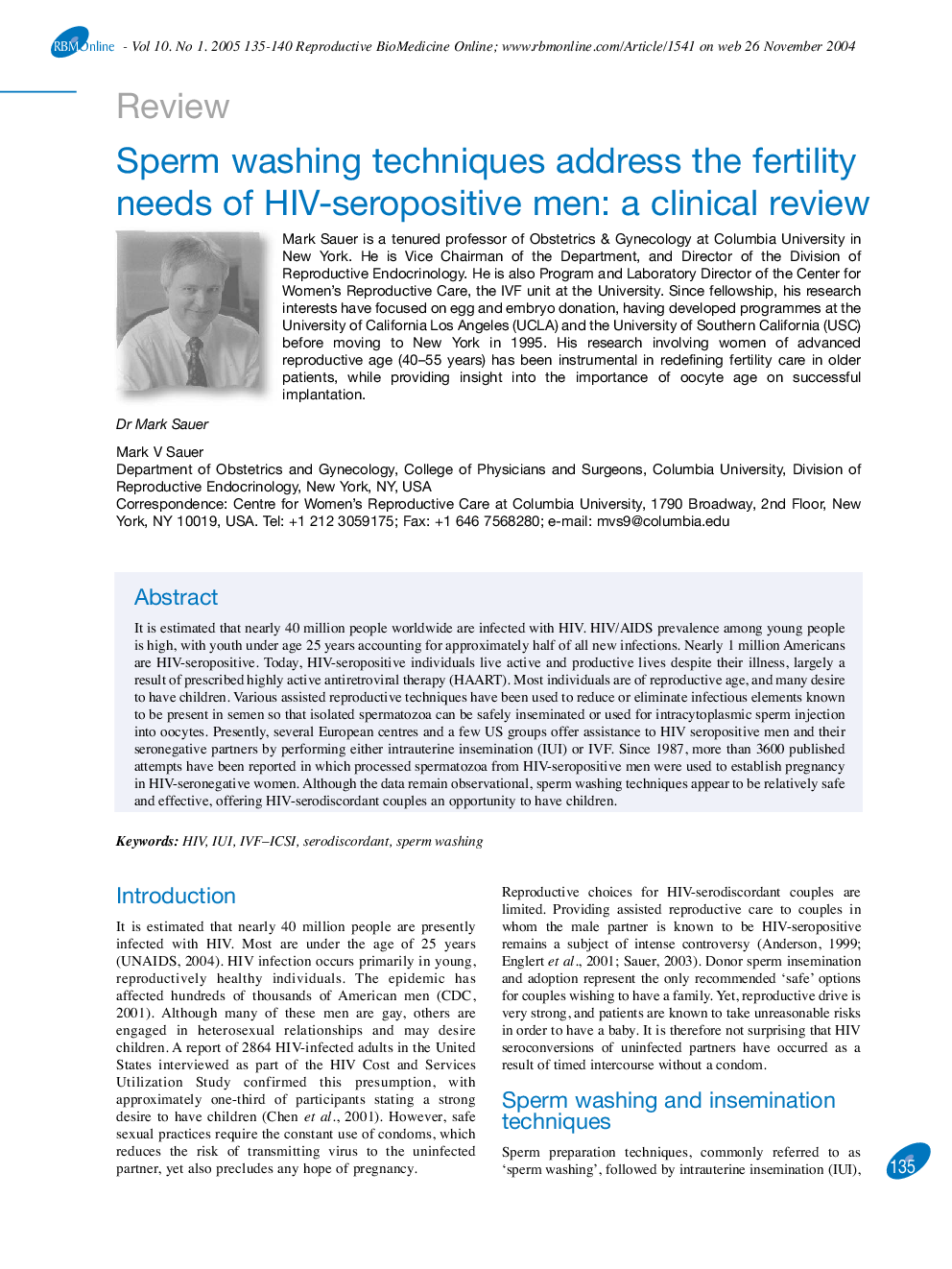| Article ID | Journal | Published Year | Pages | File Type |
|---|---|---|---|---|
| 9334935 | Reproductive BioMedicine Online | 2005 | 6 Pages |
Abstract
It is estimated that nearly 40 million people worldwide are infected with HIV. HIV/AIDS prevalence among young people is high, with youth under age 25 years accounting for approximately half of all new infections. Nearly 1 million Americans are HIV-seropositive. Today, HIV-seropositive individuals live active and productive lives despite their illness, largely a result of prescribed highly active antiretroviral therapy (HAART). Most individuals are of reproductive age, and many desire to have children. Various assisted reproductive techniques have been used to reduce or eliminate infectious elements known to be present in semen so that isolated spermatozoa can be safely inseminated or used for intracytoplasmic sperm injection into oocytes. Presently, several European centres and a few US groups offer assistance to HIV seropositive men and their seronegative partners by performing either intrauterine insemination (IUI) or IVF. Since 1987, more than 3600 published attempts have been reported in which processed spermatozoa from HIV-seropositive men were used to establish pregnancy in HIV-seronegative women. Although the data remain observational, sperm washing techniques appear to be relatively safe and effective, offering HIV-serodiscordant couples an opportunity to have children.
Related Topics
Health Sciences
Medicine and Dentistry
Obstetrics, Gynecology and Women's Health
Authors
Mark V Sauer,
